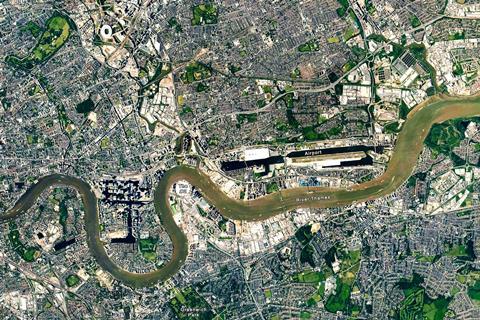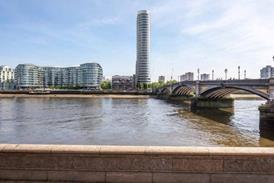New plans set out ambitious targets to create jobs and drive sustainable growth in fashion and screen industries across the Thames Estuary

We Made That has spearheaded the release of two action plans aimed at driving growth in the creative industries throughout the Thames Estuary.
The GLA, in partnership with the Thames Estuary Growth Board and Creative Estuary, appointed a team led by We Made That to produce the Thames Estuary Production Corridor Road Maps for Growth.
These plans lay out steps to attract investment, maximise assets, and promote sustainable development in the region’s screen and fashion sectors, with the potential to add £1.7bn to the UK economy.
The reports outline a framework for the creative potential of the region, where initiatives across fashion design and screen industries are expected to drive significant growth.
The Thames Estuary is on track to create 50,000 jobs and add £3.7bn to the UK’s economy by 2050.
> Also read: We Made That co-founder appointed as Hackney council town architect
The projected growth is being welcomed by the GLA as aligning with Keir Starmer’s recent announcement that the creative industries are a focal point in the national industrial strategy.
The team led by We Made That mapped over 650 potential sites, forming a comprehensive pipeline for cultural production projects across the estuary.
Among these are three prominent ‘accelerator projects’: a fashion manufacturing and upcycling hub in Tower Hamlets, a creative campus in Basildon for screen and immersive digital industries, and a screen mixed-media centre in Margate.
The roadmap details how each sector has already rapidly expanded in recent years. Screen production, for instance, grew by 42% between 2016 and 2021, with the addition of over 1,200 jobs and a marked increase in businesses.
Similarly, the fashion industry in the estuary has proven resilient, growing 16% in business presence and 12% in employment within the same period. However, the industry also faces the challenge of aligning growth with sustainable and circular practices.
Priorities set for the screen industry include commitments to net-zero, innovation in workforce development, and diversity – ensuring accessibility and inclusivity within the growing sector. For fashion, the priorities focus on fostering micro-clusters rooted in ethical practices, advancing skills and innovation across tech and craft, and driving placemaking that nurtures community development.
Oliver Goodhall, co-founding partner at We Made That, said, “London has been the beating heart of our creative industries for centuries, but now we can see how vital the Thames Estuary will be to the future of two of our fast-growing sectors: fashion production and the screen sector. A coordinated regional approach will contribute to the Labour government’s mission to kickstart economic growth.”
“These reports offer practical advice and tangible recommendations to national and local stakeholders on how to unlock growth – from ‘re-shoring’ of fashion production through micro-factory production spaces to building capacity for the screen sector to innovate net zero and circularity solutions – in turn boosting the economy and supporting our communities.”
The programme also unites councils, industry leaders, businesses, education providers and community organisations, aiming to rejuvenate high streets and town centres through culture-led investment.
Deputy mayor for culture and the creative industries, Justine Simons, said, “We always travel best with the help of a good guide, and this Road Map for Growth shows how estuary leaders can make the best use of assets, expertise and infrastructure to unlock long term, culture led local growth and build on the success of our world leading culture and creative industries.”
The project team also includes Hawkins\Brown, regeneration experts PRD, Tom Fleming Creative Consultancy, Ramidus, and industry advisors Jan Miller and Suzie Norton.
















No comments yet